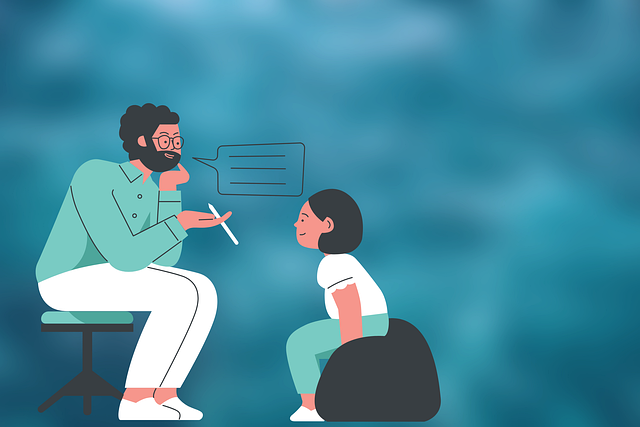Preventing Substance Abuse: A Holistic Approach for Young Chronic Pain Sufferers
TL;DR:Substance abuse among young children with chronic pain is a complex issue driven by emotional…….
Chronic pain in young children is a growing concern globally, impacting their overall well-being, development, and quality of life. As a result, therapy specifically tailored to address this complex issue has gained significant attention and importance. This article aims to provide an extensive overview of therapy for young children with chronic pain, exploring various aspects that contribute to its understanding, practice, and future direction. By delving into the historical context, global impact, economic considerations, technological advancements, policy frameworks, challenges, case studies, and future prospects, we aim to equip readers with a comprehensive insight into this vital field.
Therapy for young children chronic pain is an interdisciplinary approach designed to alleviate and manage persistent pain in children aged 0-12 years. It involves a range of evidence-based practices, including psychological interventions, physical therapy, sensory integration techniques, mindfulness, relaxation training, and family support strategies. The core components focus on understanding the child’s pain experience, improving pain coping mechanisms, enhancing functional abilities, and promoting overall resilience.
The concept of pain management in children has evolved over centuries, with early approaches often focusing on symptomatic relief rather than addressing the underlying causes. In the 20th century, there was a growing recognition of the unique challenges associated with pediatric pain, leading to the development of specialized clinics and research initiatives. The past few decades have seen a significant advancement in understanding child psychology, neurology, and the impact of chronic pain on developmental milestones. This has resulted in more tailored and comprehensive therapy models.
Chronic pain in childhood is a multifaceted issue with potential long-term implications. It can be associated with various conditions such as fibromyalgia, headaches, neurological disorders, or complex regional pain syndrome. Early intervention through specialized therapy is crucial for several reasons:
The impact of therapy for young children chronic pain is not limited to a single region, as pain is a universal experience. However, cultural differences play a significant role in the expression and perception of pain, influencing treatment approaches:
Several global trends are shaping the future of therapy for young children chronic pain:
The global market for pediatric pain management services is expanding due to increasing awareness, rising prevalence of chronic pain in children, and improving healthcare infrastructure. Key components contributing to this growth include:
Private equity firms, venture capitalists, and healthcare investors are showing increasing interest in pediatric pain management, recognizing its potential impact on both child health and long-term societal costs. Investments are primarily directed towards:
The economic impact of therapy for young children chronic pain is far-reaching:
Technology has revolutionized therapy for young children chronic pain through enhanced tools and improved delivery methods:
Technological advancements have improved access to therapy, enhanced patient engagement, and enabled more precise treatment approaches:
In the future, technology is expected to play an even more significant role in:
The development and regulation of therapy for young children chronic pain are influenced by various global policies and frameworks:
Policies and regulations significantly shape the landscape of therapy for young children chronic pain:
Despite its potential, therapy for young children chronic pain is not without challenges:
To address these challenges, several strategies can be implemented:
The following case studies highlight successful implementations of therapy for young children chronic pain:
Case Study 1: The Pain Relief Clinic (PRC) – USA:
Case Study 2: The Shanghai Children’s Medical Center (SCMC) – China:
Case Study 3: The Kids’ Pain Relief Network (KPRN) – UK:
The field of therapy for young children chronic pain is poised for significant growth and evolution:
Several emerging trends are shaping the future:
To capitalize on these future prospects, stakeholders should focus on:
Therapy for young children chronic pain is a complex yet vital field that requires interdisciplinary collaboration, technological innovation, and robust policy support. By addressing the unique challenges faced by this vulnerable population, therapy can significantly improve their quality of life and overall well-being. As research continues to uncover new insights, and technology advances at a rapid pace, the future of pediatric pain management holds great promise for transforming lives.
Q: What are the common causes of chronic pain in children?
A: Chronic pain in children can arise from various conditions, including fibromyalgia, headaches (tension-type and migraine), neurological disorders like epilepsy or multiple sclerosis, complex regional pain syndrome, and certain surgical procedures or injuries.
Q: How does therapy for young children chronic pain differ from adult pain management?
A: Pediatric pain therapy considers the unique developmental needs of children, incorporating age-appropriate techniques and strategies. It often involves parents or caregivers as an integral part of the therapy process. Additionally, pediatric therapists may use play and creative activities to engage children during sessions.
Q: Can technology really improve access to therapy for chronic pain in remote areas?
A: Absolutely! Digital health interventions, such as mobile apps and telehealth services, enable children in remote areas to access specialized therapy from the comfort of their homes. This accessibility is crucial for ensuring timely intervention and improving outcomes.
Q: What role does family support play in a child’s recovery from chronic pain?
A: Family support is instrumental in a child’s recovery. Involving parents or caregivers in therapy sessions, providing a supportive home environment, and fostering open communication can significantly impact the child’s understanding of their pain and adherence to treatment plans.
Q: How can I know if my child is experiencing chronic pain?
A: Chronic pain in children may manifest as persistent complaints of pain, irritability, changes in sleep or appetite, difficulty concentrating, or avoidance of activities they once enjoyed. If you suspect your child is experiencing chronic pain, consult a healthcare professional for an evaluation.

TL;DR:Substance abuse among young children with chronic pain is a complex issue driven by emotional…….